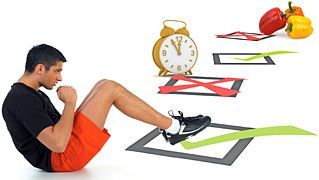Some doctors thrive in a personality-based clinic and have a loyal following no matter what services or equipment they offer, but for most chiropractic offices who are trying to grow and expand, new equipment purchases help us stay relevant and continue to service our client base in the best, most up-to-date manner possible. So, regarding equipment purchasing: should you lease, get a bank loan, or pay cash?
Are You Ready to Take the Public Health Challenge?
Are you interested in doing more to help your patients maintain better health? Consider approaching them using basic public-health principles. As you know, the human body has an amazing ability to heal itself when given a chance. Removing interference to health is an excellent approach. In addition to chiropractic adjustments/manipulation, we provide support services and education to our patients. Much of what we do in chiropractic is already within the realm of public health.
When we take an initial health history or update our notes to find out what our patients' health concerns are and why they have come to see us, it is the perfect time to uncover some of the factors that may be complicating their conditions. Many of our patients may not realize that they are doing things on a daily basis to hinder their health. It is up to us to help them. We should reach out to our patients and provide them with additional scientific-based information that can guide them with health decisions as part of their chiropractic care.
Below are some public health topics you may wish to consider addressing with your patients. You may already be doing some of these activities, but may wish to ramp up the volume to be even more effective. These are easy ways to incorporate public health into your practice and fulfill your mission as a wellness practitioner. Are you ready to take the challenge?

Exercise / Fitness
We all know exercise has an impact on our neuromusculoskeletal health in addition to our cardiovascular health. Regular exercise promotes healthy bones and muscles, which helps maintain a healthy spine. If spinal tone and range of motion are not maintained, how effective will our treatments be?
Do you take an exercise history on your patients? Do you counsel them on exercise intensity, frequency and duration? Are you helping them reach their exercise and fitness goals? Do you inquire about their choice of exercise equipment, such as the use of helmets and the number of miles they have run in their shoes?
Posture and Spinal Health
Oral hygiene promotes healthier teeth and gums. Is there such a thing as spinal hygiene? Of course there is. Do you coach your patients on how to take care of their spine between office visits? Consider utilizing a free online resource: Straighten Up America, available at www.straightenupamerica.org. This program provides free handouts, media presentations and other information for improving posture in both adults and children.
Sleep and Regenerative Rest
The type of pillow used, mattress age, sleeping posture, and sleeping environment all have an impact on your patients' quality of sleep. How often do you ask them about sleep hygiene when you take a history? Do you provide educational information about the importance of quality sleep and rest? Do you ask new patients about the age of their mattress, or remind them that it needs to be turned periodically?
Tobacco Use
Tobacco use, whether smoking, chewing or using snuff, is drastically detrimental to one's health. For those patients who smoke, do you provide information about how to stop using tobacco? Consider tapping in to free resources such as Chiropractors Against Tobacco (CAT), a WFC priority project in support of the World Health Organization's Tobacco-Free Initiative to help improve health and prevent tobacco-related death. Visit the World Federation of Chiropractic Web site (www.wfc.org) and search for Chiropractors Against Tobacco. This site will provide you with free informative material for you and your patients. This is virtually an effortless and no-cost way to integrate health promotion activities into your practice.
Work Environment and Safety

You probably educate your patients about avoiding re-injury after they have presented to your office for an injury complaint. Do you educate them about preventing injuries before they happen? Do you offer local businesses a workshop on how to prevent injuries, either traumatic or repetitive, in the workplace?
Nutrition and Diet
The health of the body depends upon its nutritional building blocks. Without the necessary nutrients, our bones, muscles and nerves will not function properly. If our body is overburdened with excess weight, the muscles, joints, and cardiovascular system suffer. Do you educate your patients about how important nutrition is to maintaining overall health? Nutritional education need not be time-consuming or expensive. Basic screening questions can help identify patients who are in need of nutritional assistance. If pressed for time, introduce your patients to resources available online for free, such as the United States Department of Agriculture's food pyramid program (www.mypyramid.gov). This program offers individualized interactive tools to help your patients reach their goals. [Note: The pyramid concept has recently been updated to a "plate" system for determining appropriate food intake. Visit the USDA Web site to learn more.]
These are just a few of many activities you can incorporate into your practice to help your patients reach their health goals. If you are not already doing these public health-related activities in your office (or are only doing a few), consider picking one that you feel most comfortable with and incorporating it for one month; the month after that, add another activity. Or you can mix and match depending upon the patients you are seeing.
In addition, consider creating an intake form that encompasses these basic public health topics. An intake form will help streamline your office procedures and provide enough time in your practice to promote healthy behavior in your patients. Once you have mastered these on a patient level, consider going beyond individual patients and reach out to even more people. Consider joining forces with community activities. By joining or organizing group activities or educational sessions, you can help inform your community about ways they can achieve better health and wellness.
I invite you to join the chiropractic public health community. If you are already a member of the American Public Health Association, Chiropractic Health Care section, you know how important the relationship is between public health and chiropractic. If you are not currently a member, consider joining and becoming active in this exciting organization. For further information on participating in the public health effort by joining APHA, go to www.apha.org/about/membership/.


